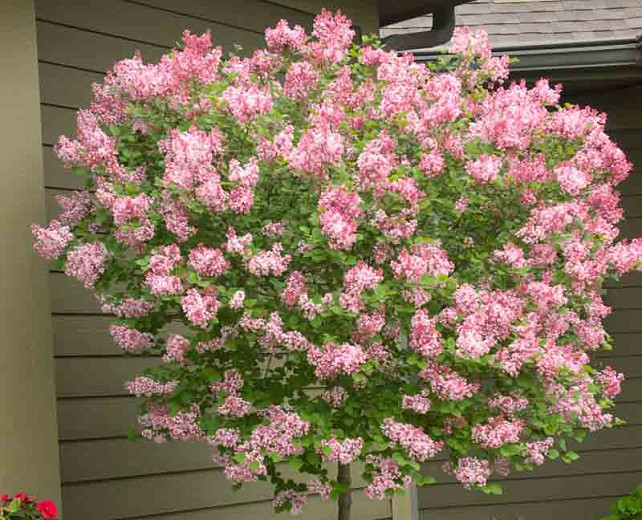Syringa Tinkerbelle: The Petite Lilac Tree That Packs A Punch
Title: Syringa Tinkerbelle: The Petite Lilac Tree That Packs a Punch
Introduction:
Lilacs are a beloved sight in gardens across the world, and for good reason. Their fragrant blooms come in a wide variety of colors, from deep purple to pale pink. But what if you don't have a lot of space? Or what if you're looking for a lilac that's a little more unique?
If so, the Syringa Tinkerbelle lilac tree may be the perfect choice for you. This dwarf lilac tree only grows to be about 6 feet tall, making it a great option for small gardens or patios. And its lavender-purple blooms are sure to turn heads.
Main Content:
In addition to its compact size, the Syringa Tinkerbelle lilac tree also has a number of other advantages. It's very hardy, and can withstand temperatures as low as -20 degrees Fahrenheit. It's also relatively easy to care for, and only needs to be watered regularly during the growing season.
The Syringa Tinkerbelle lilac tree blooms in early spring, and its flowers typically last for about two weeks. The blooms are fragrant, and they attract a variety of pollinators, including bees, butterflies, and hummingbirds.
Conclusion:
If you're looking for a beautiful and low-maintenance lilac tree, the Syringa Tinkerbelle is a great option. It's perfect for small gardens, patios, or even containers. And its fragrant blooms are sure to brighten your springtime garden.
Syringa Tinkerbelle is a small, compact lilac tree that is perfect for small gardens. It blooms in late spring with fragrant, white flowers. The tree can reach a mature height of 5-8 feet and a width of 4-5 feet.
To learn more about Syringa Tinkerbelle, visit Home Gardening. This website has a wealth of information about the tree, including its history, care, and planting tips.
FAQ of syringa tinkerbelle
Q: What is Syringa Tinkerbelle?
A: Syringa Tinkerbelle is a dwarf lilac tree that is known for its small size, fragrant flowers, and bright pink blooms. It is a popular choice for small gardens and containers.
Q: How big does Syringa Tinkerbelle get?
A: Syringa Tinkerbelle typically grows to be 4-6 feet tall and 3-4 feet wide. It is a slow-growing tree, so it will not outgrow its space quickly.
Q: When does Syringa Tinkerbelle bloom?
A: Syringa Tinkerbelle blooms in late spring to early summer. The flowers are a bright pink color and have a sweet fragrance.
Q: How to care for Syringa Tinkerbelle?
A: Syringa Tinkerbelle is a relatively easy tree to care for. It prefers full sun and well-drained soil. Water it regularly during the growing season, but do not overwater. Fertilize it once a year in the spring.
Q: Is Syringa Tinkerbelle deer resistant?
A: Syringa Tinkerbelle is not deer resistant. Deer may eat the leaves and flowers of the tree.
Q: What are some common pests and diseases of Syringa Tinkerbelle?
A: The most common pests of Syringa Tinkerbelle are aphids, scale insects, and leafhoppers. The most common diseases of Syringa Tinkerbelle are powdery mildew and leaf spot.
Image of syringa tinkerbelle
- Image 1: A close-up of a Tinkerbelle lilac flower, showing its delicate purple petals.

- Image 2: A full shot of a Tinkerbelle lilac tree in bloom, showing its cascading branches of flowers.

- Image 3: A Tinkerbelle lilac tree in the fall, showing its colorful leaves.

- Image 4: A Tinkerbelle lilac tree in winter, showing its bare branches.

- Image 5: A Tinkerbelle lilac tree in a garden, surrounded by other flowers.

- Image 6: A Tinkerbelle lilac tree in a pot, on a patio.

- Image 7: A Tinkerbelle lilac tree as a centerpiece in a wedding bouquet.

- Image 8: A Tinkerbelle lilac tree as a border in a flower bed.

- Image 9: A Tinkerbelle lilac tree as a windbreak.

- Image 10: A Tinkerbelle lilac tree as a specimen tree in a lawn.

Post a Comment for "Syringa Tinkerbelle: The Petite Lilac Tree That Packs A Punch"